Getting Started With RTL-SDR Blog V4
I got my RTL-SDR Blog V4 today and I want to share my first impressions. I had already worked with an SDR (Analog Devices ADALM-Pluto) with my university team. I enjoyed the technology and decided to explore it on my own too. I chose the RTL-SDR because of its simplicity, low price, and impressive performance for its cost.
What is SDR ?
Software-defined radio (SDR) is a radio communication technology that performs signal processing using software rather than traditional hardware components. In a conventional radio, components like mixers, filters, amplifiers, and detectors are implemented physically. With SDR, many of these tasks are offloaded to a general-purpose processor or FPGA, allowing greater flexibility, lower cost, and easier upgrades. I’m not going to deep dive into SDR architecture here, that’s a story for another post.
RTL-SDR V4
RTL-SDR Blog V4 is a USB SDR based on the RTL2832U demodulator chip and the R828D tuner chip. It features SMA and USB-A connectors and supports a frequency range of approximately 500 kHz to 1.766 GHz.
Some key capabilities include:
- FM radio reception
- Digital radio (DAB, DAB+)
- ADS-B (aircraft tracking)
- NOAA weather satellite reception (APT)
- Radiosondes
- AIS (ship tracking)
- Trunked radio systems (with proper software)
- Simple radio astronomy (e.g., detecting hydrogen line)
The V4 adds a bias-tee circuit with an LED indicator, improved filtering for HF, and better thermal performance compared to the previous versions.
Note: RTL-SDR is receive-only. It does not support transmitting.
RTL-SDR V3 vs RTL-SDR V4
RTL-SDR Blog V3 and V4 are similar in frequency range (around 500 kHz to 1.766 GHz), but V4 comes with a few key upgrades. V3 uses the R860 tuner, while V4 uses the newer R828D. V4 has improved thermal performance, a built-in bias-tee with an LED indicator, and better HF reception thanks to an onboard downconverter. Unlike V3’s direct sampling mode, V4 offers cleaner HF with less hassle. Both work on major platforms, but V4 requires updated software for full compatibility.
What’s in the Box and Some Technical Specs
I ordered the RTL-SDR Blog V4 with the multipurpose dipole antenna kit from AliExpress. It arrived in about 10 days to Stuttgart, Germany. The packaging was okay, though a solid box could’ve offered more protection.
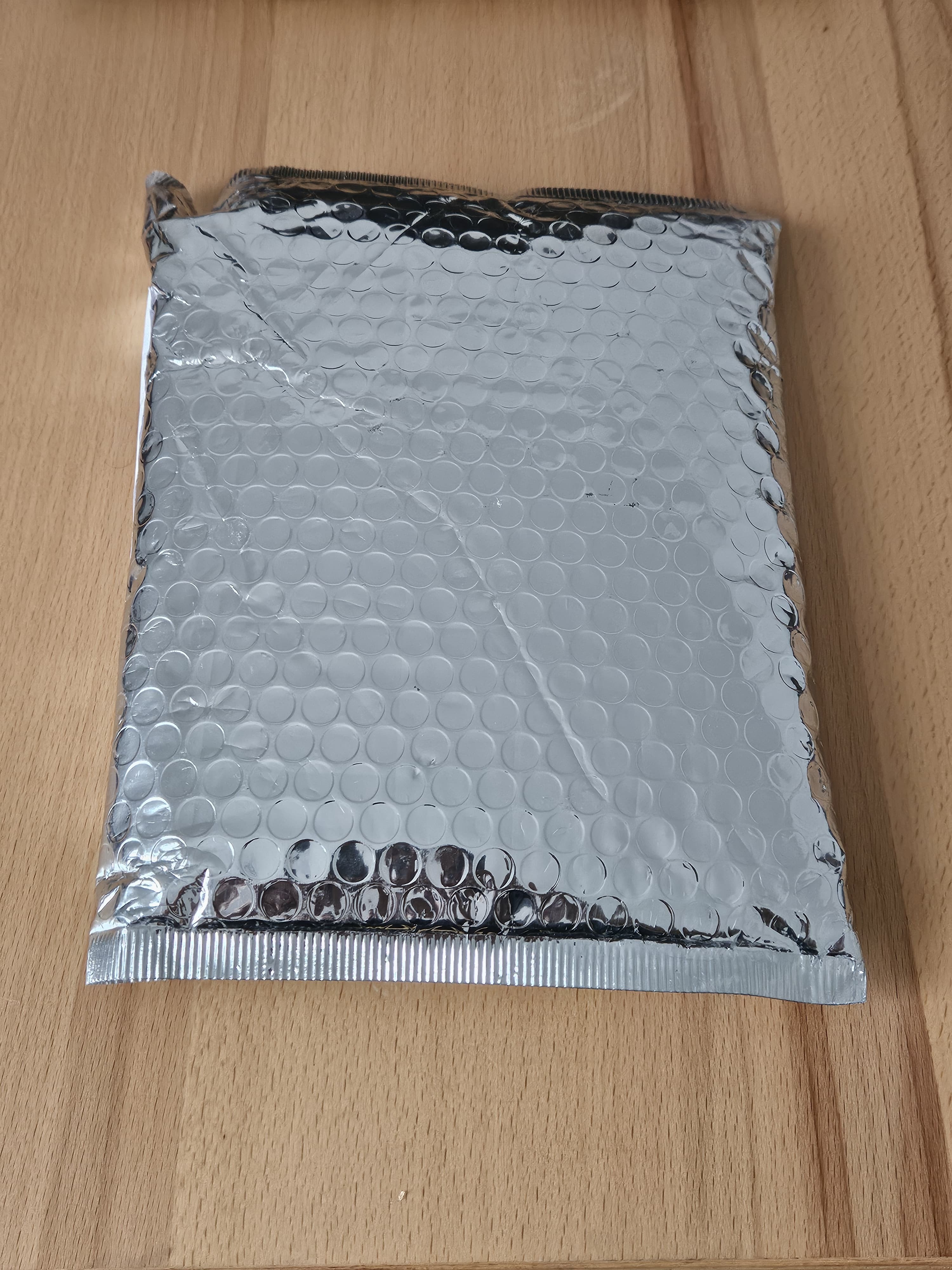
RTL-SDR Blog V4 with Multipurpose Dipole Antenna Package
The package includes:
- 1x RTL-SDR Blog V4 dongle
- 2x short telescopic dipole elements (5–13 cm)
- 2x long telescopic dipole elements (23–1 m)
- 1x dipole antenna base with SMA female connector
- 1x tripod mount
- 1x suction cup window mount
- 1x 3-meter RG174 coaxial cable (SMA male to SMA female)
- User manual
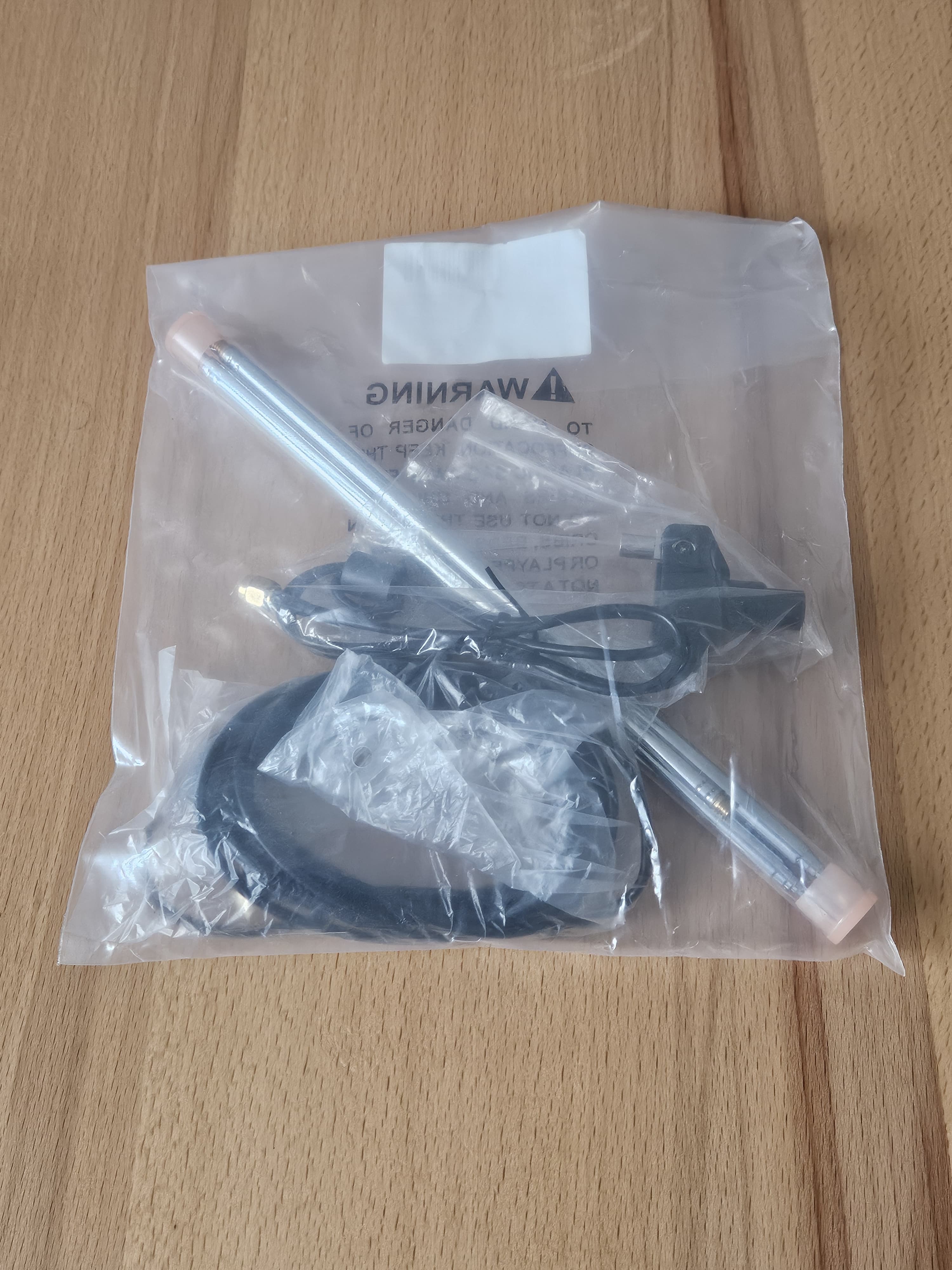
Multipurpose Dipole Antenna Package
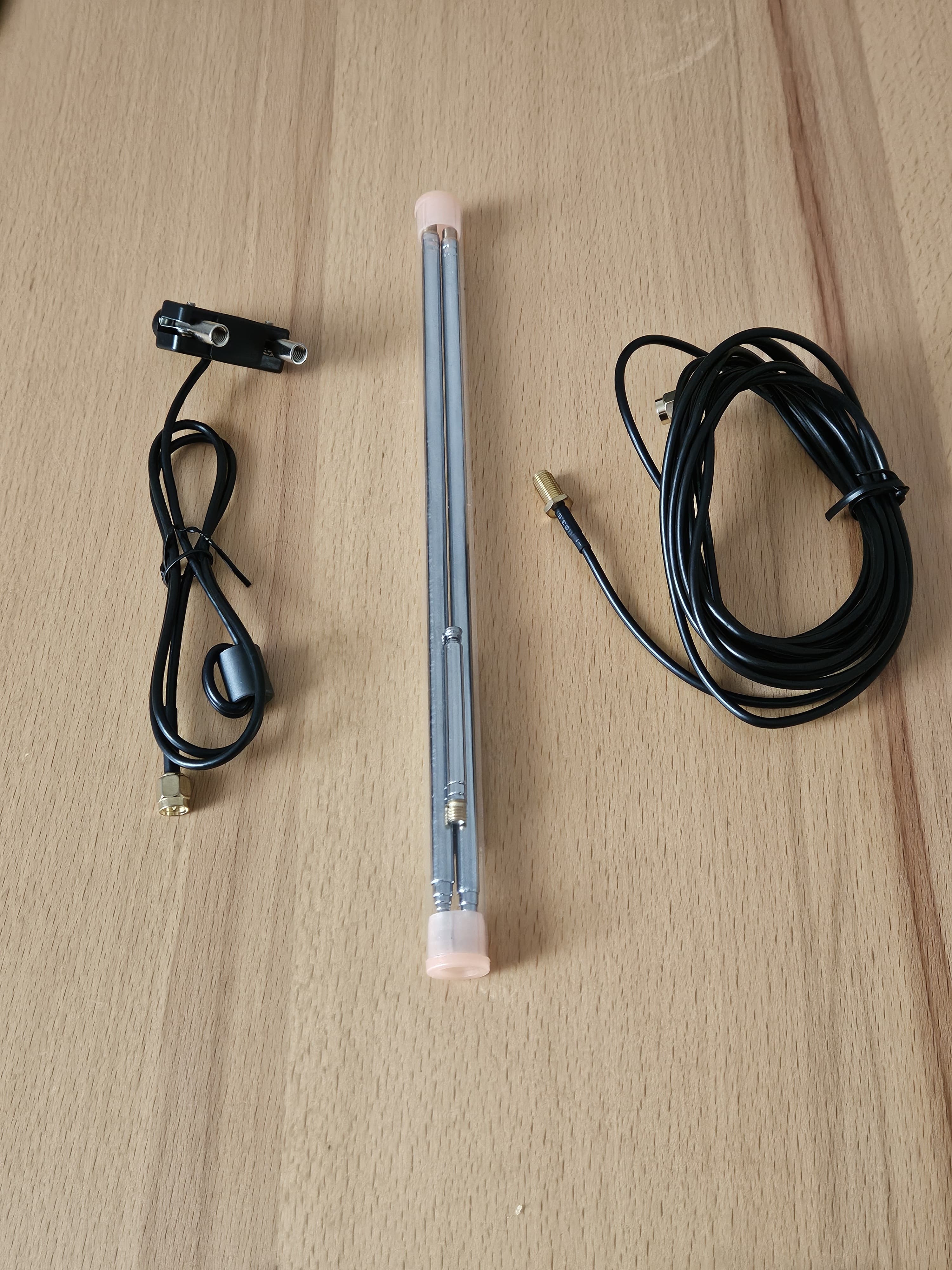
RTL-SDR Blog V4 with Multipurpose Dipole Antenna
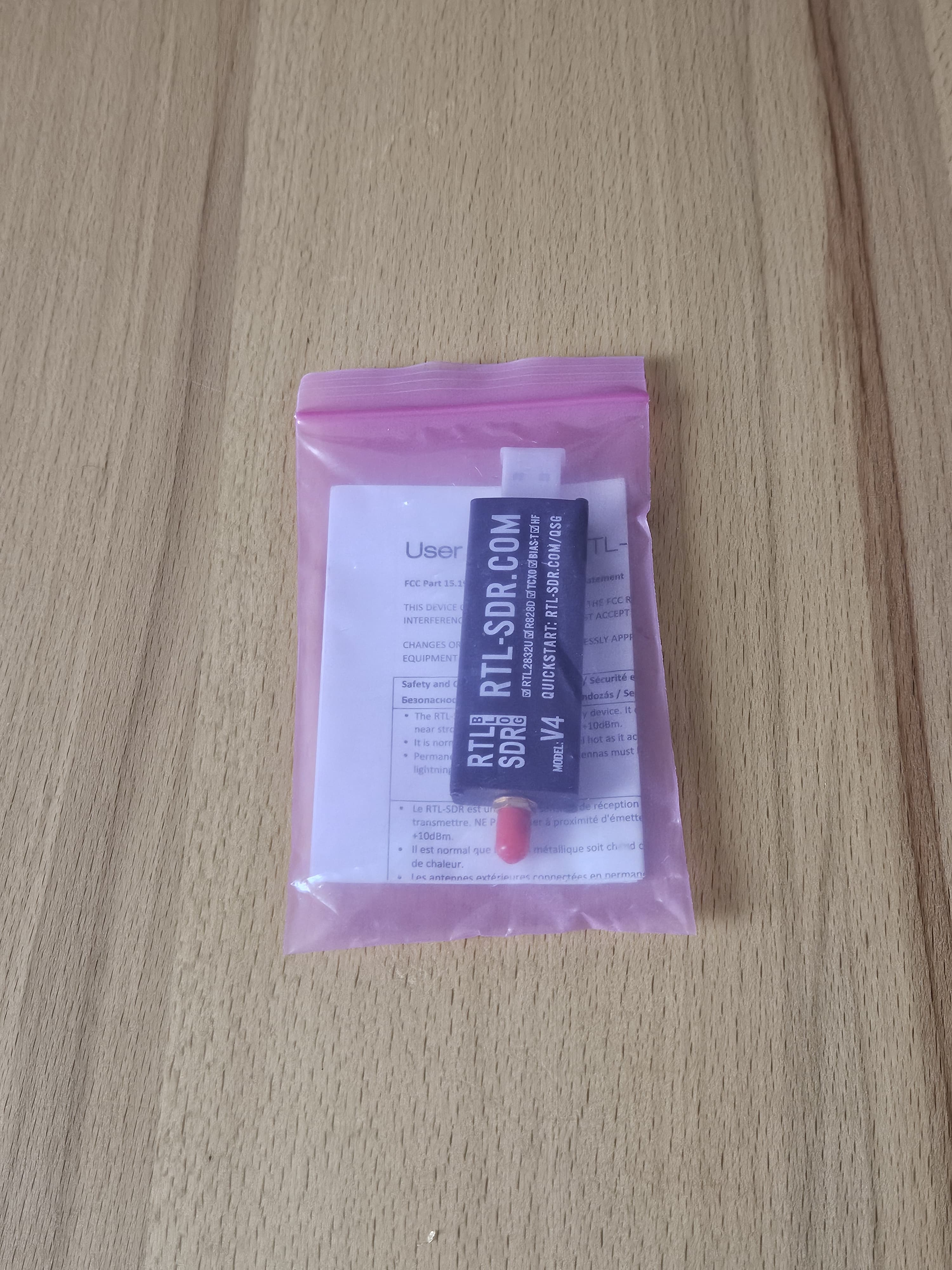
RTL-SDR Blog V4 Package
The antenna build quality is decent for the price. The tripod and suction mount are practical and allow stable indoor and window-mounted operation. The coaxial cable is thin (RG174), which introduces some loss, but it’s fine for short distances.
The dongle has a metal case, improving durability and EMI shielding. The USB-A and SMA ports are covered with rubber caps, a nice touch.
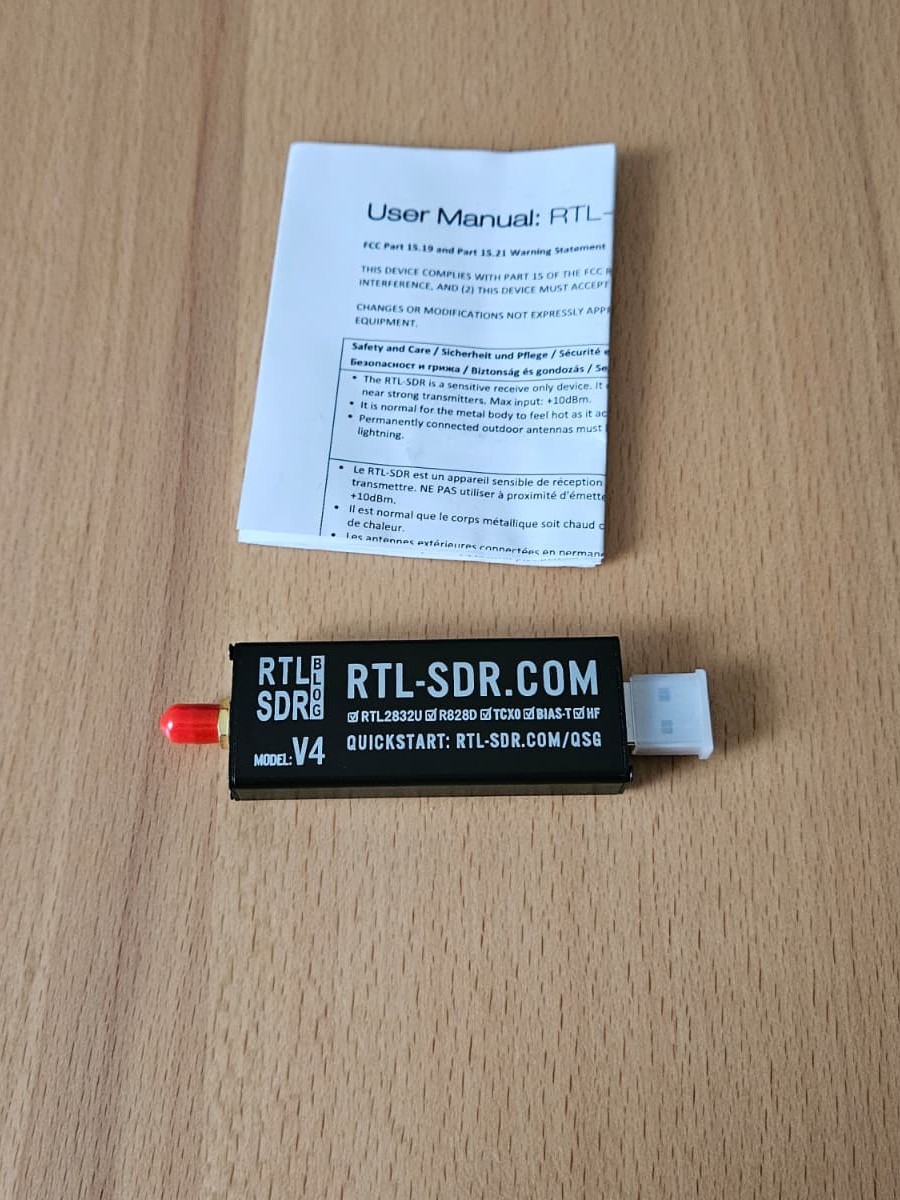
RTL-SDR Blog V4
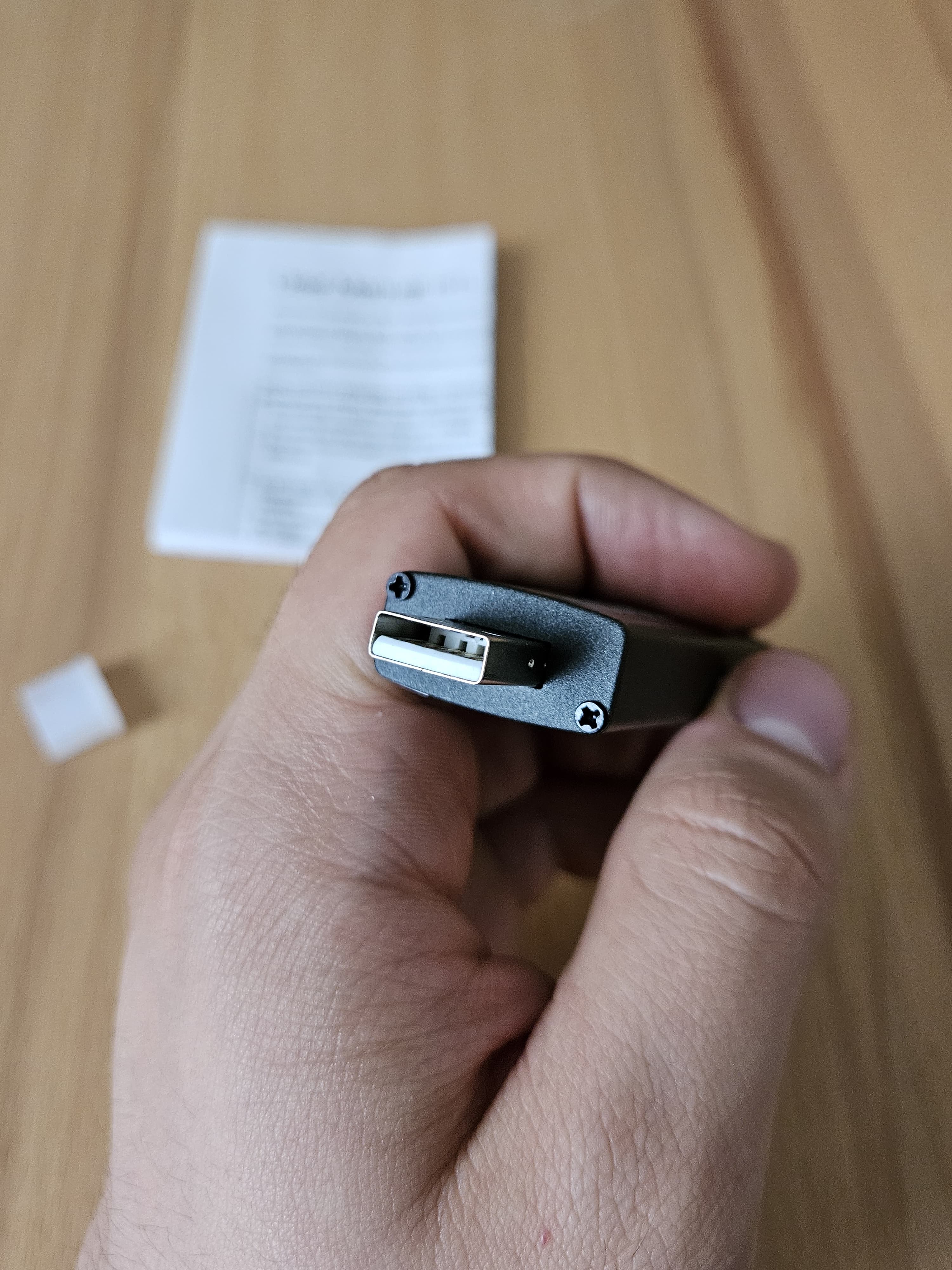
RTL-SDR Blog V4 USB Port
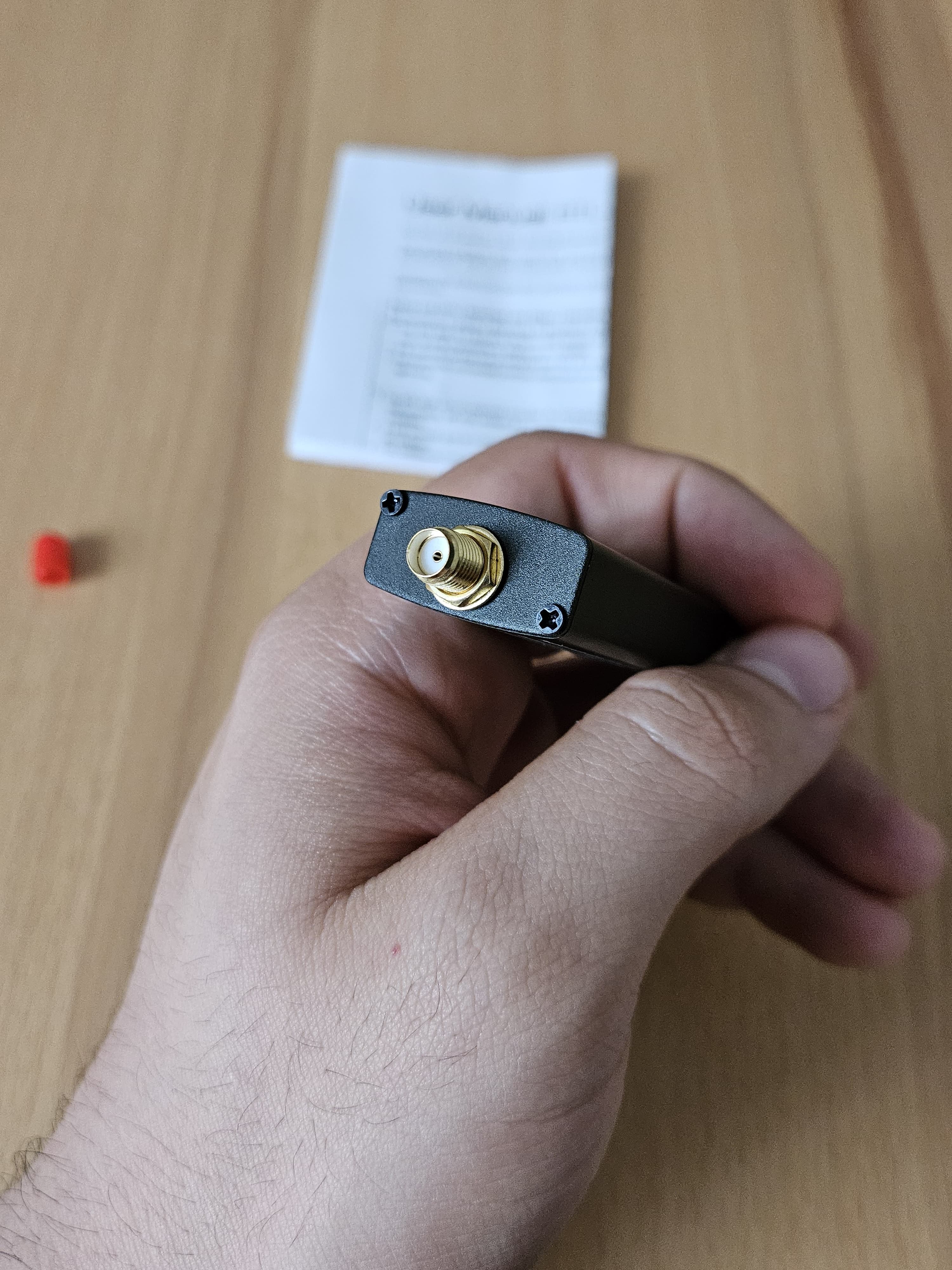
RTL-SDR Blog V4 SMA Port
Before you buy, visit the official RTL-SDR website to learn how to spot fake or cloned dongles. Especially on Amazon, AliExpress, and eBay.
Driver & SDR Software Installation
The official RTL-SDR V4 user guide explains the driver installation clearly for all major platforms. Personally, I recommend using a Debian-based Linux distro like Ubuntu or Mint. The ecosystem for SDR software is much more mature and streamlined there as I see. For SDR software, I’m using SDR++. It’s lightweight, modern, and cross-platform. On my system (Intel i5-8265U, 16 GB RAM, running Parrot OS), it runs smoothly and uses minimal resources. You can get it from https://www.sdrpp.org. Other good software options include GQRX, CubicSDR, and SDR# (on Windows). Just make sure the software version supports RTL-SDR V4, especially for HF.
First Signals to Try
The easiest way to start is by scanning for local FM radio stations in the 88–108 MHz range. They’re strong, always present, and perfect for confirming your setup works. After that, you can try receiving ADS-B signals at 1090 MHz using software like dump1090 to track aircraft in real time.
If you’re near an airport, the 118–137 MHz VHF airband is a fun area to explore. You can hear air traffic control and pilot communication. You can also hunt for weather balloons (radiosondes) between 400-406 MHz or listen to AM broadcast signals in the lower HF band at night. The RTL-SDR opens up a surprisingly big world of signals to explore.
Final Thoughts
RTL-SDR Blog V4 is an amazing entry point to radio exploration. It’s cheap, portable, and surprisingly powerful. Pair it with the right antenna and software, and you’ll unlock a whole hidden world of signals around you.